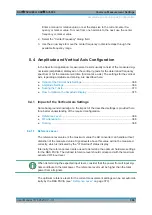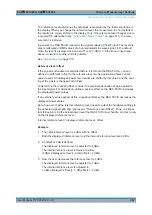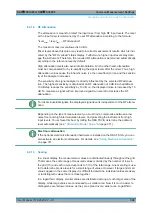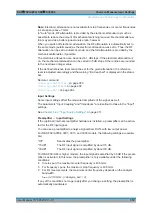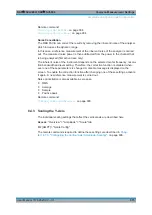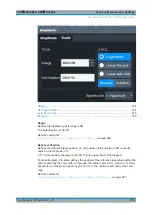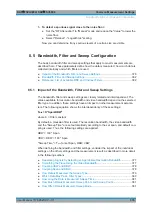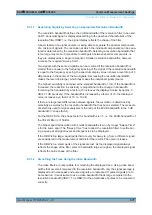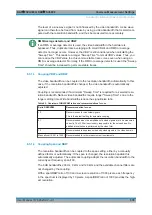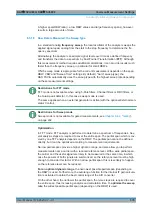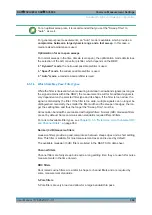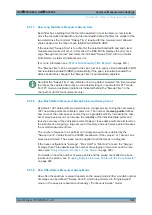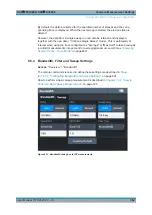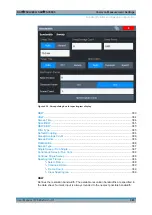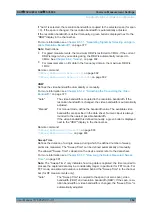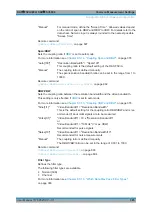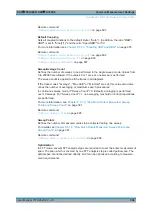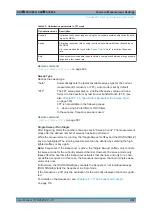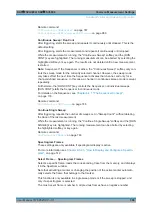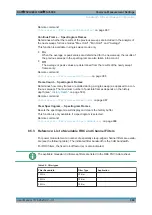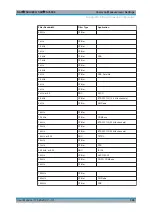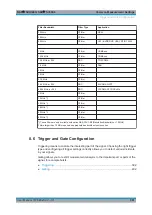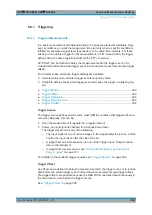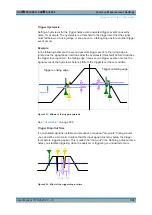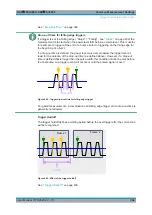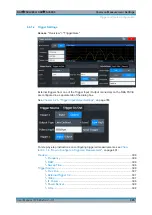
Common Measurement Settings
R&S
®
FSVA3000/ R&S
®
FSV3000
380
User Manual 1178.8520.02 ─ 01
For an optimal sweep rate, it is recommended that you set the "Sweep Time" to
"Auto" , as well.
For general purpose measurements, an "Auto" mode is available, which provides a
compromise between a large dynamic range and a fast sweep
. In this case, a
medium-sized partial span is used.
Optimization for zero span sweeps
For normal sweeps in the time domain (zero span), the optimization mode determines
the selection of the A/D converter prefilter, which depends on the RBW.
In
"Dynamic" mode
, the narrowest possible prefilter is used.
In
"Speed" mode
, the widest possible prefilter is used.
In
"Auto" mode
, a medium-sized prefilter is used.
8.5.1.6
Which Data May Pass: Filter Types
While the filter is irrelevant when measuring individual narrowband signals (as long as
the signal remains within the RBW), the measurement result for broadband signals is
very dependant on the selected filter type and its shape. If the filter is too narrow, the
signal is distorted by the filter. If the filter is too wide, multiple signals can no longer be
distinguished. Generally, the smaller the filter width and the steeper its edges, the lon-
ger the settling time and thus the longer the "Sweep Time" must be.
All resolution bandwidths are realized with digital filters. Normal (3dB) Gaussian filters
are set by default. Some communication standards require different filters.
For a list of available filter types, see
Chapter 8.5.3, "Reference: List of Available RRC
Normal (3 dB) Gaussian filters
Gaussian filters provide a good compromise between steep edges and a short settling
time. This filter is suitable for most measurement tasks and is used by default.
The available Gaussian (3 dB) filters are listed in the R&S
FSV/A data sheet.
Channel filters
Channel filters are fairly steep but require a long settling time; they are useful for pulse
measurements in the time domain.
RRC filters
Root raised cosine filters are similar in shape to channel filters and are required by
some measurement standards.
5-Pole filters
5-Pole filters are very broad and allow for a large bandwidth to pass.
Bandwidth, Filter and Sweep Configuration

